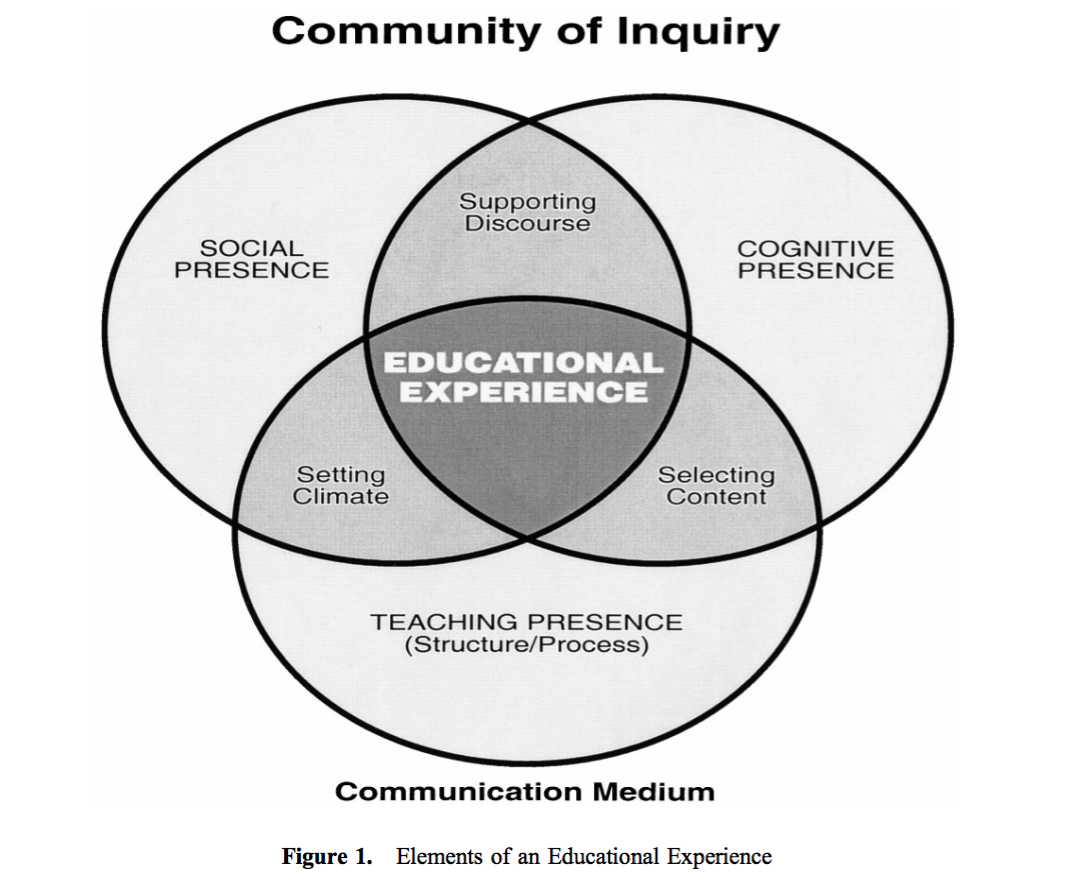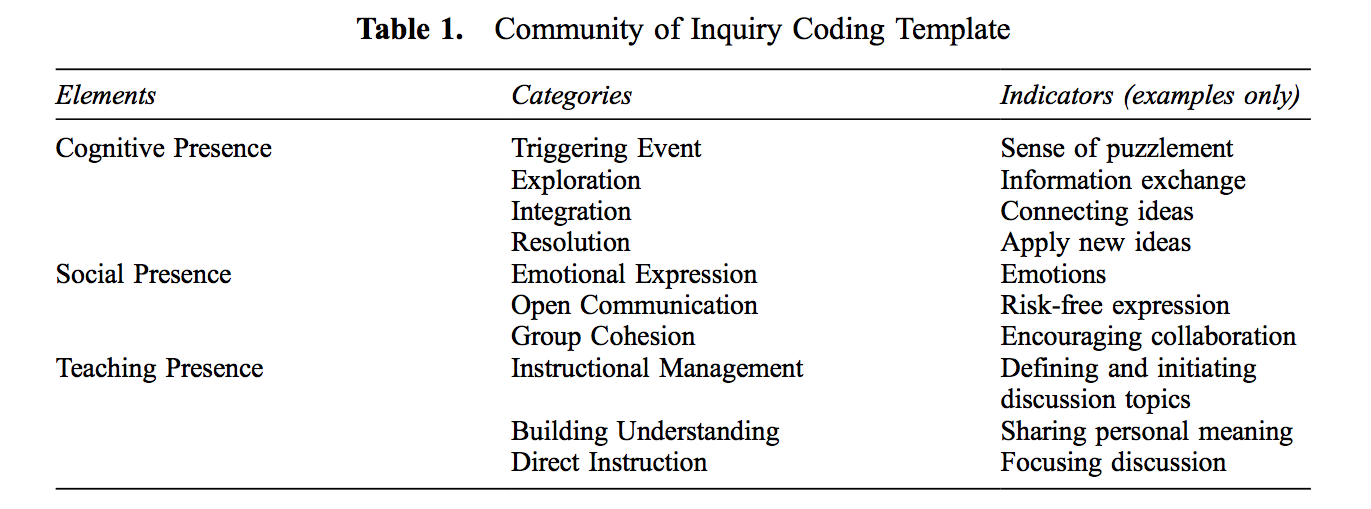
Critical Enquiry in a Text-Based Environment: Computer Conferencing in Higher Education by Garrison, Anderson & Archer (2000) puts forward a learning concept and a tool for computer-mediated communication (CMC) in supporting an educational experience. The concept of Community of Inquiry (CoI) concerns knowledge formation and the process of scientific inquiry to solve problems within a social context. Containing three elements: social presence, cognitive presence and teaching presence, they combine to facilitate learning within the Community, providing an enjoyable and progressive learning experience.
At first glance at this image it seems that the Teacher has just one, small isolated role in the learning experience. But my position is that the Teacher has almost total influence and control over all the elements. I see the Teacher As Designer, designing educational situations which allow her learners to harness and develop the skills needed to succeed in the 21st century. So if the Teacher can essentially design the path that leads to successful learning, what are the main activities that need to occur along the way in an online context?
Well this paper by Garrison, Anderson & Archer (2000) provides some answers. Through the analysis of computer-conferencing transcripts their study reveals the key Categories of Indicators that facilitate an educational transaction. In this way I believe that incorporating these indicators into the learning design of lessons and courses can lead to successful learning experiences.

Cognitive Presence
This study highlights cognitive presence as “the extent to which participants in any particular configuration of a community of inquiry are able to construct meaning through sustained communication” (p89). When thinking about the Indicators for Cognitive Presence, the following activities come to mind:
- Sense of puzzlement – text discussion or videos on how to use the platform, how to use common digital tools and how to interact with each other. Establishing the rules and netiquette would help to reduce the sense of puzzlement.
- Information exchange – getting to know you activities where participants exchange personal information through images, text, audio and/or video. Online it is even more important to support the development of relationships, without the physical presence and visual cues we often rely on in face to face learning.
- Connecting ideas – to be presented with new information, not just through text, but also through audio and video. This could be done through journal readings or lecture videos, recommended by the Teacher in the first instance (but learners should be encouraged to share learning material with the Community relevant to the particular area of study, too).
- Applying new ideas – to be encouraged to take new knowledge recently acquired and apply it in the real world. Putting what you have learnt into practice, and later reflecting on that process is a powerful learning loop that underlies critical thinking.
Social Presence
The second element of the model, social presence is defined as “the ability of participants…to project their personal characteristics into the community, thereby presenting themselves to the other participants as ‘real people'” (p89). When thinking about the Indicators for Social Presence, the following activities come to mind:
- Emotions – the use of emoticons, emojis, and gifs have become the new shorthand in place of text. It allows for quick expression with a range or emotions and opinions.
- Risk-free expression – to set a standard whereby learners are encouraged to give their opinions with reasons and examples. The Teacher moderates discussions maintaining a balance, pulling forward quieter students, and weaving a cohesive narrative between group responses. (Unacceptable responses would be dealt with under netiquette.)
- Encouraging collaboration – a mix of individual, pair and group work to solve problems or present information to the group. A task with clear instructions and rubric will enable participants not only to understand what needs to be done, but helps identify & assign roles, as well as understand how to achieve the highest grade.
Teaching Presence
The third element of the model, teaching presence, has two functions – the design of the educational experience and facilitation. It is primarily the Teacher’s responsibility to create the learning experience, whereas, all members of the Community are welcome to facilitate – in other words, lead a discussion, or assign roles for group work, confirm deadlines etc. When thinking about the Indicators for Teaching Presence, the following ideas come to mind:
- Defining and initiating discussion topics – give instructions in different formats, not only text, but also audio or video, which makes the experience more interactive.
- Sharing personal meaning – share own understanding, and then encourage students to contribute their own experiences, highlighting areas of agreement and disagreement, before trying to reach a consensus in the group
- Focusing discussion – keep students ‘on topic’ by confirming understanding, addressing any misconceptions and making a final summary
Summary
Overall I found the first part of this article very useful outlining as it does the “crucial prerequisites for a successful higher educational experience”. Most interestingly, the activities that I came up with (above) to fortify the Community as prescribed by Garrison, Anderson & Archer (2000), were indeed very similar to those encountered on my online distance Masters course. That is not to say that I should be writing Masters courses ;). Nor that that the course was without fault. Of course there were areas for improvement. And I will continue to reflect on this, and the rest of the article in upcoming posts.
Reference
Garrison, D.R., Anderson, T., & Archer, W. (2000). Critical Enquiry in a Text-Based Environment: Computer Conferencing in Higher Education. The Internet and Higher Education 2(2-3), 87-105.

1 Comment on “Community of Inquiry – Reflection 1”
Comments are closed.